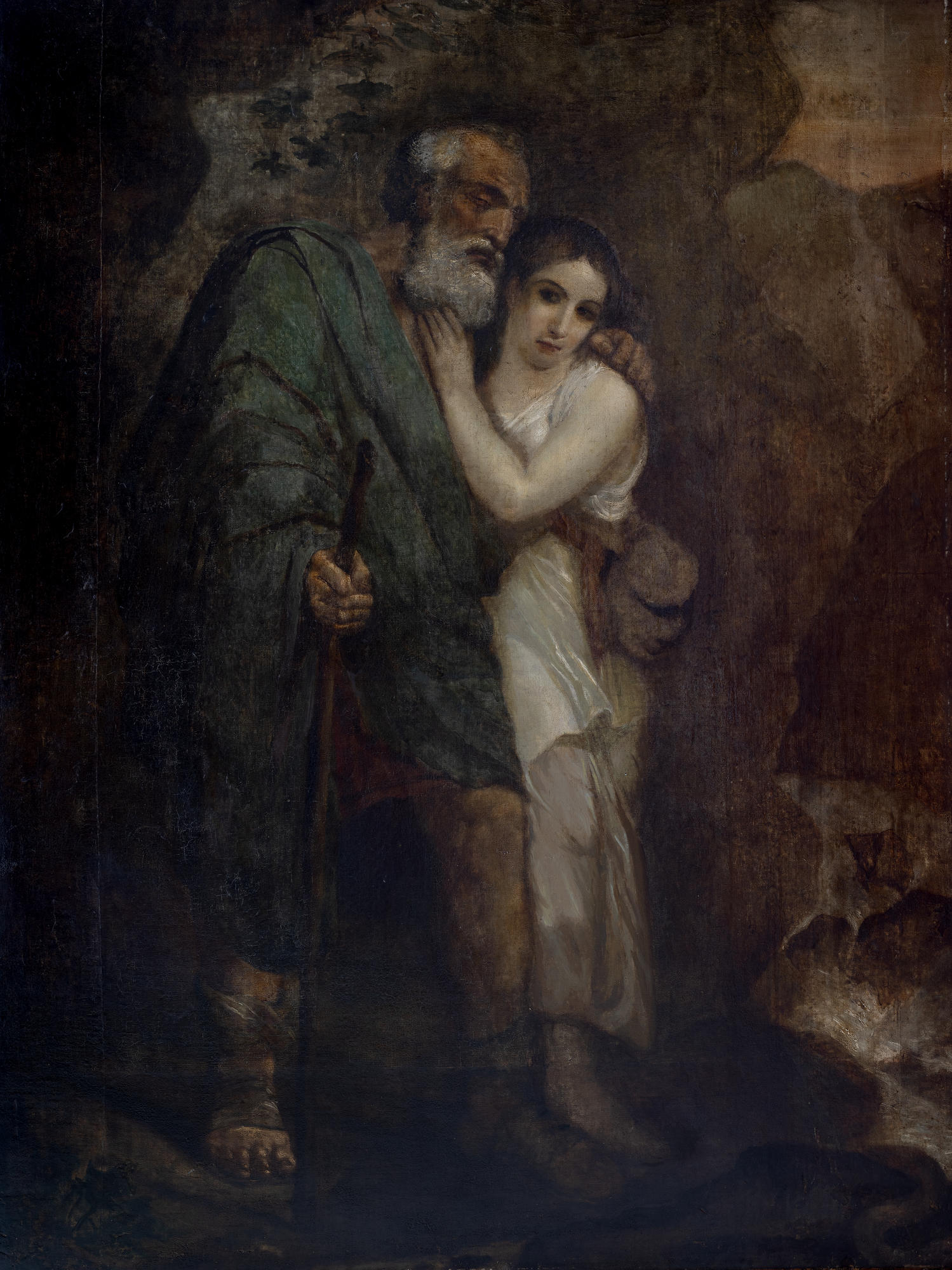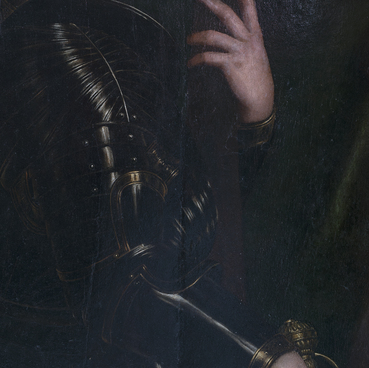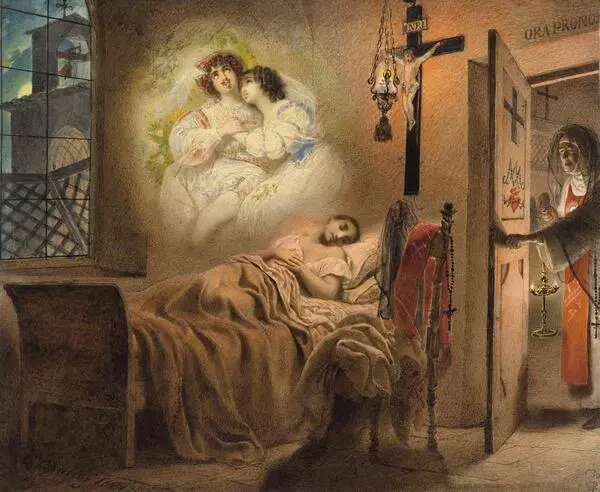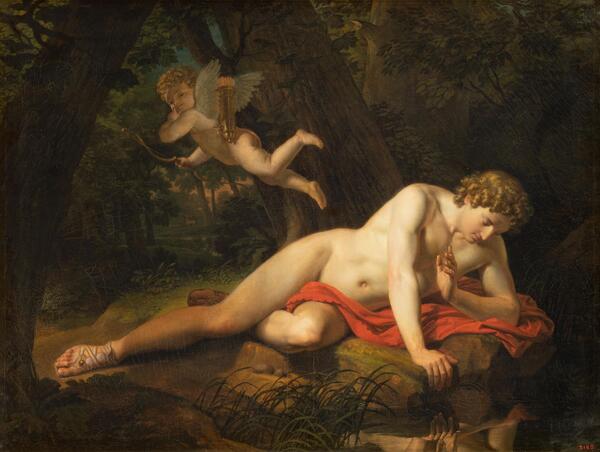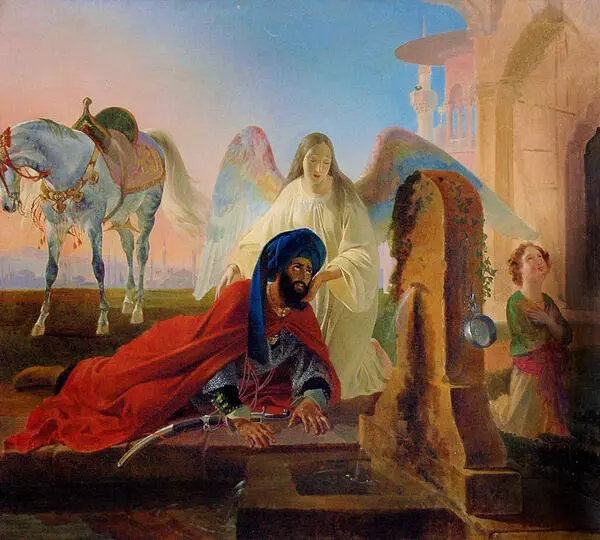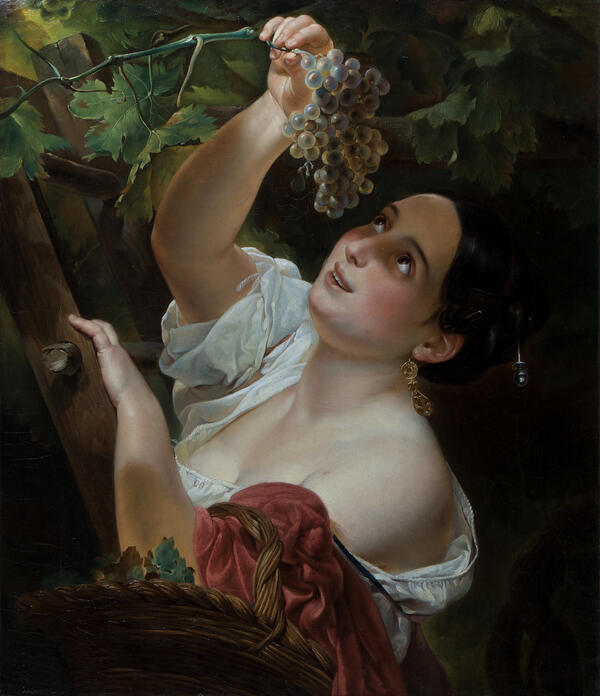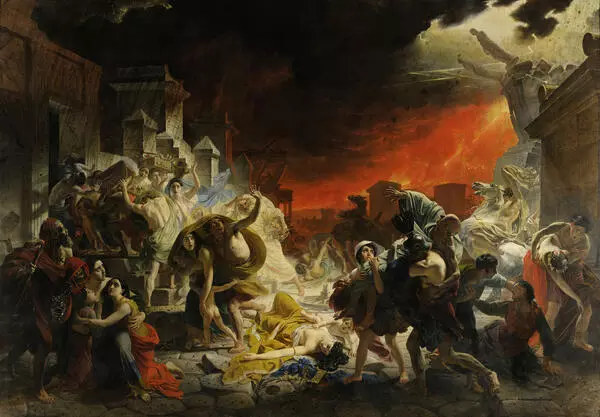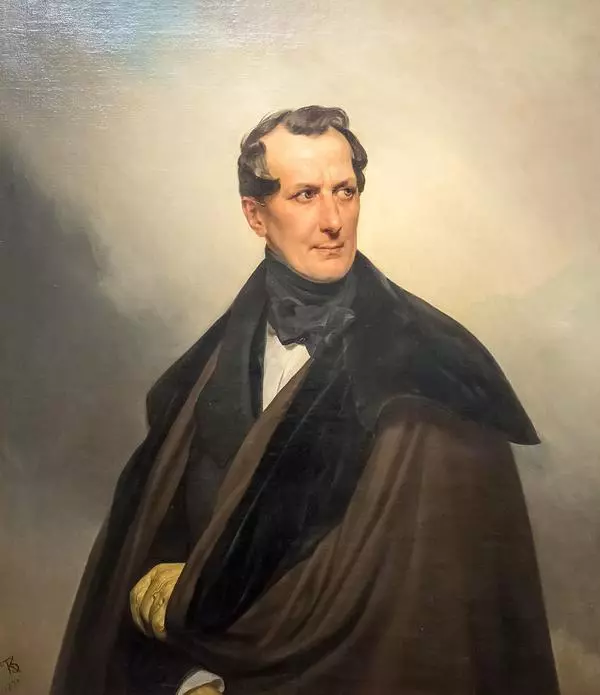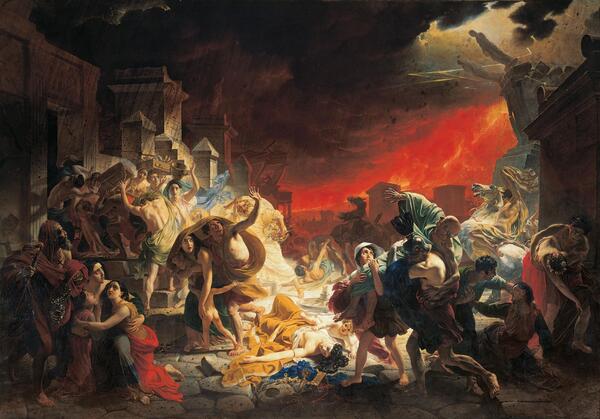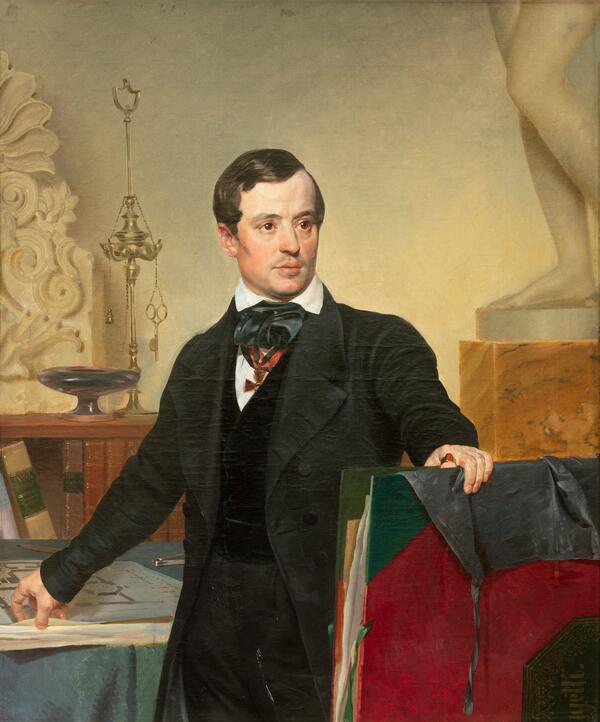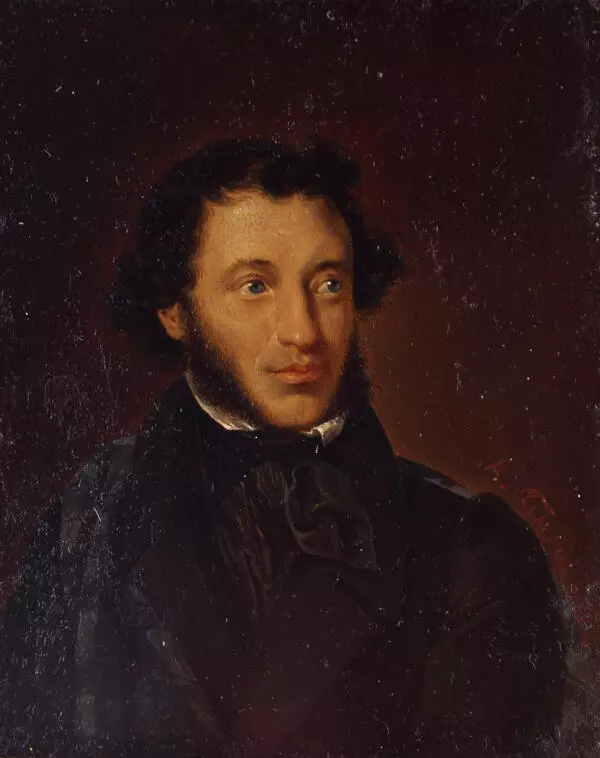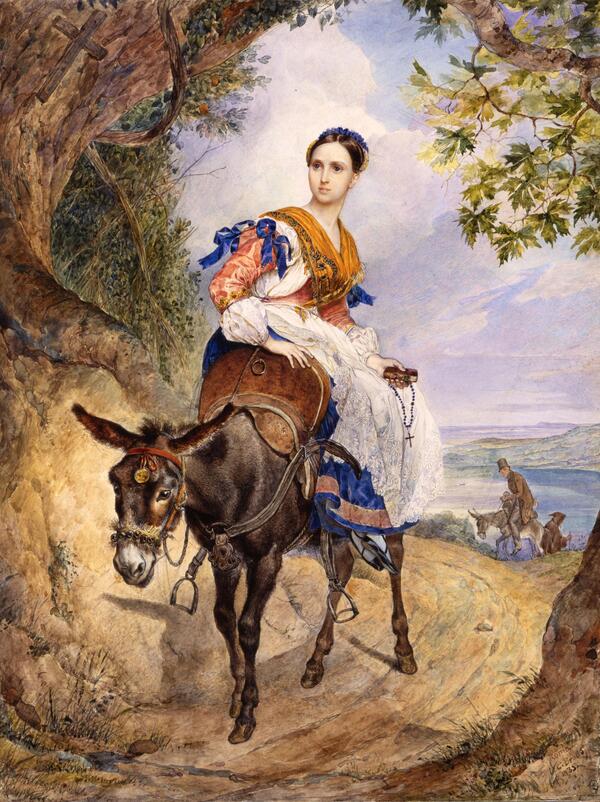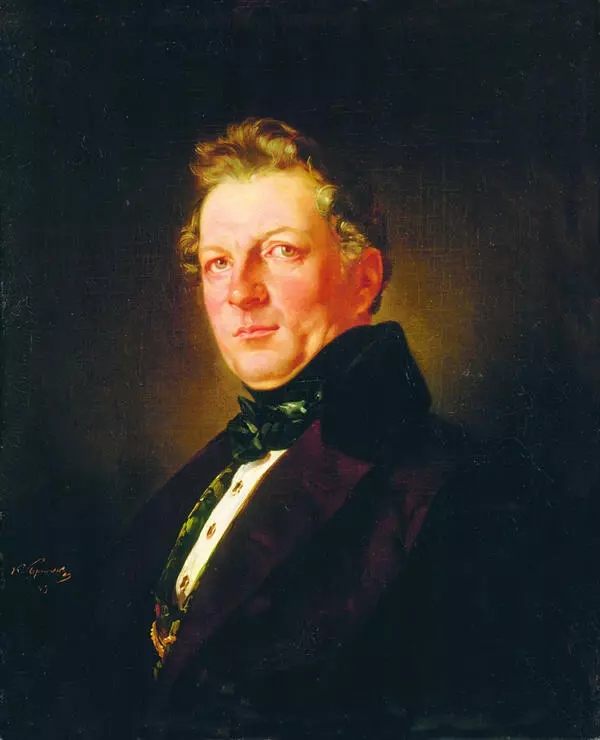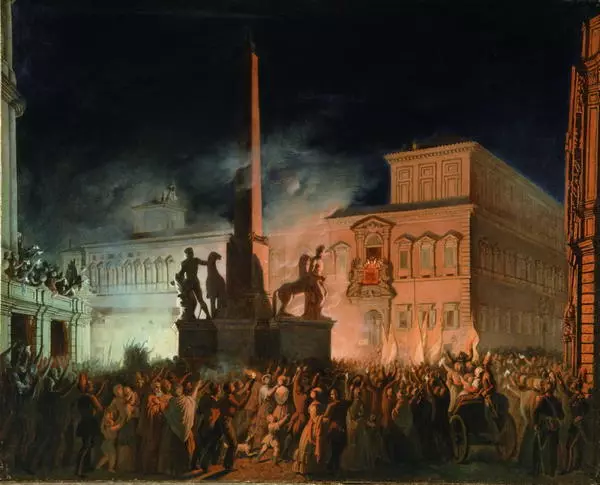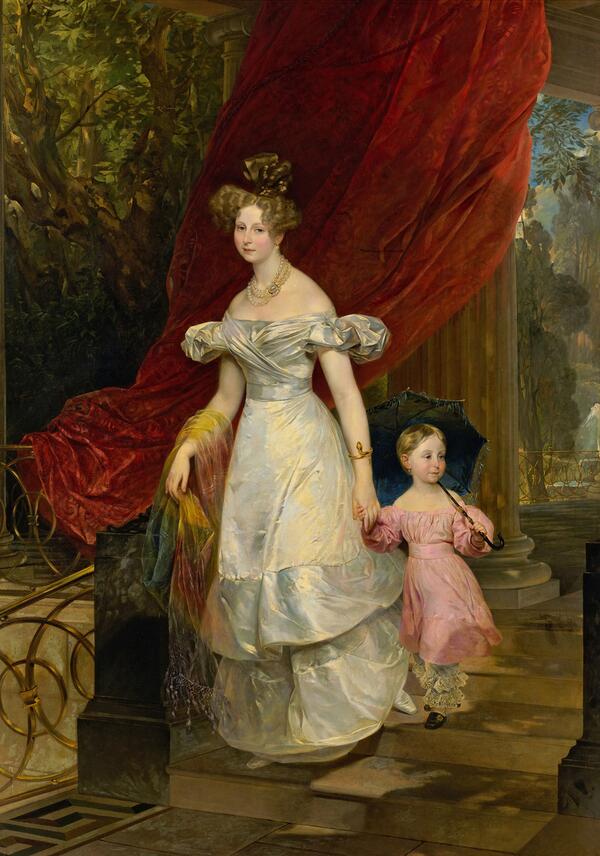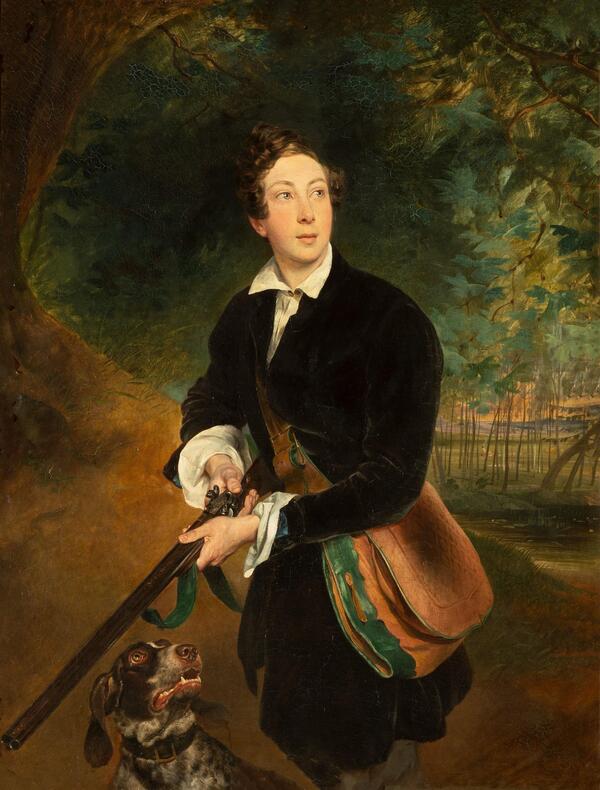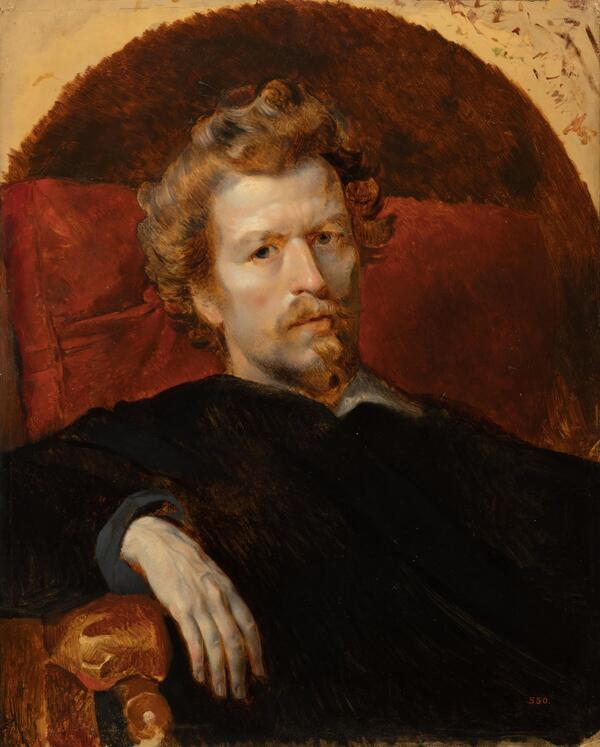The work Oedipus and Antigone from the collection of Tyumen Museum and Educational Society was painted by Russian artist Karl Pavlovich Bryullov in 1821. He was creating it at the same time with the painting Remorse of Polinic. Exactly for these works the Society for the Encouragement of Artists awarded the painter a state-paid trip to Italy, where the artist went with his elder brother Alexander. Thus, the painting Oedipus and Antigone can be considered a kind of a ‘trip ticket to Italy’ for Bryullov brothers.
In Italy Russian painter Karl Bruyllov created a large-scale painting, which brought him a world fame — The Last Day of Pompeii.
It was exhibited in European art galleries and later was sent to St. Petersburg. Here many critics called it the greatest creation in the history of Russian art. Yevgeny Baratynsky wrote:‘And there became last day of Pompeii, the first day for Russian paintbrush’ . The composition of the painting Oedipus and Antigone Karl Bryullov reproduced in lithography for the album, which he called ‘Lithographic Baubles’. Nowadays it is kept in the State Russian Museum in St. Petersburg. It was compared with the painting and the authorship was confirmed.
The painting depicts the plot from an ancient Greek tragedy by Sophocles ‘Oedipus the King’. Oedipus is the son of the king of Thebes city and queen Jocasta. Father ordered to throw his child into the abyss as he had been predicted to die from his son’s hand. But the boy was taken and brought up by the shepherds. When he became a lad, he killed in a road hassle Laius, without knowing that he was his father. Having come to Thebes, he cracked a mystery of Sphinx, this way freeing the city from this terrible monster, and being awarded a marriage to the queen, without knowing that she was his mother, and became the king of Thebes. Fifteen years later gods sent plague to the city and the oracle heralded that it would be over when the murder of Laius was expelled, and he unravelled a terrible truth to Oedipus. Jocasta committed suicide out of shame, hanging herself on her belt. Being terrified from what he had done, Oedipus blinded himself and went into exile. Everybody turned their backs upon him and only the elder daughter Antigone followed her father in his wanderings of her own free will, being his support and rock. The painting was sold to the collector, whose name remained unknown. For a long time, the trace of the painting was lost. After the Great Patriotic War, it was found in Leningrad in the attic of one of the houses, rolled with the paint layer inside and very dirty. The restoration of the damaged painting was made unprofessionally — the layer of the painting was washed till the underpainting. Then it was purchased for the private collection and in 1959 through intermediary of the Ministry of Culture the painting was sold to Tyumen art gallery.
In Italy Russian painter Karl Bruyllov created a large-scale painting, which brought him a world fame — The Last Day of Pompeii.
It was exhibited in European art galleries and later was sent to St. Petersburg. Here many critics called it the greatest creation in the history of Russian art. Yevgeny Baratynsky wrote:‘And there became last day of Pompeii, the first day for Russian paintbrush’ . The composition of the painting Oedipus and Antigone Karl Bryullov reproduced in lithography for the album, which he called ‘Lithographic Baubles’. Nowadays it is kept in the State Russian Museum in St. Petersburg. It was compared with the painting and the authorship was confirmed.
The painting depicts the plot from an ancient Greek tragedy by Sophocles ‘Oedipus the King’. Oedipus is the son of the king of Thebes city and queen Jocasta. Father ordered to throw his child into the abyss as he had been predicted to die from his son’s hand. But the boy was taken and brought up by the shepherds. When he became a lad, he killed in a road hassle Laius, without knowing that he was his father. Having come to Thebes, he cracked a mystery of Sphinx, this way freeing the city from this terrible monster, and being awarded a marriage to the queen, without knowing that she was his mother, and became the king of Thebes. Fifteen years later gods sent plague to the city and the oracle heralded that it would be over when the murder of Laius was expelled, and he unravelled a terrible truth to Oedipus. Jocasta committed suicide out of shame, hanging herself on her belt. Being terrified from what he had done, Oedipus blinded himself and went into exile. Everybody turned their backs upon him and only the elder daughter Antigone followed her father in his wanderings of her own free will, being his support and rock. The painting was sold to the collector, whose name remained unknown. For a long time, the trace of the painting was lost. After the Great Patriotic War, it was found in Leningrad in the attic of one of the houses, rolled with the paint layer inside and very dirty. The restoration of the damaged painting was made unprofessionally — the layer of the painting was washed till the underpainting. Then it was purchased for the private collection and in 1959 through intermediary of the Ministry of Culture the painting was sold to Tyumen art gallery.
